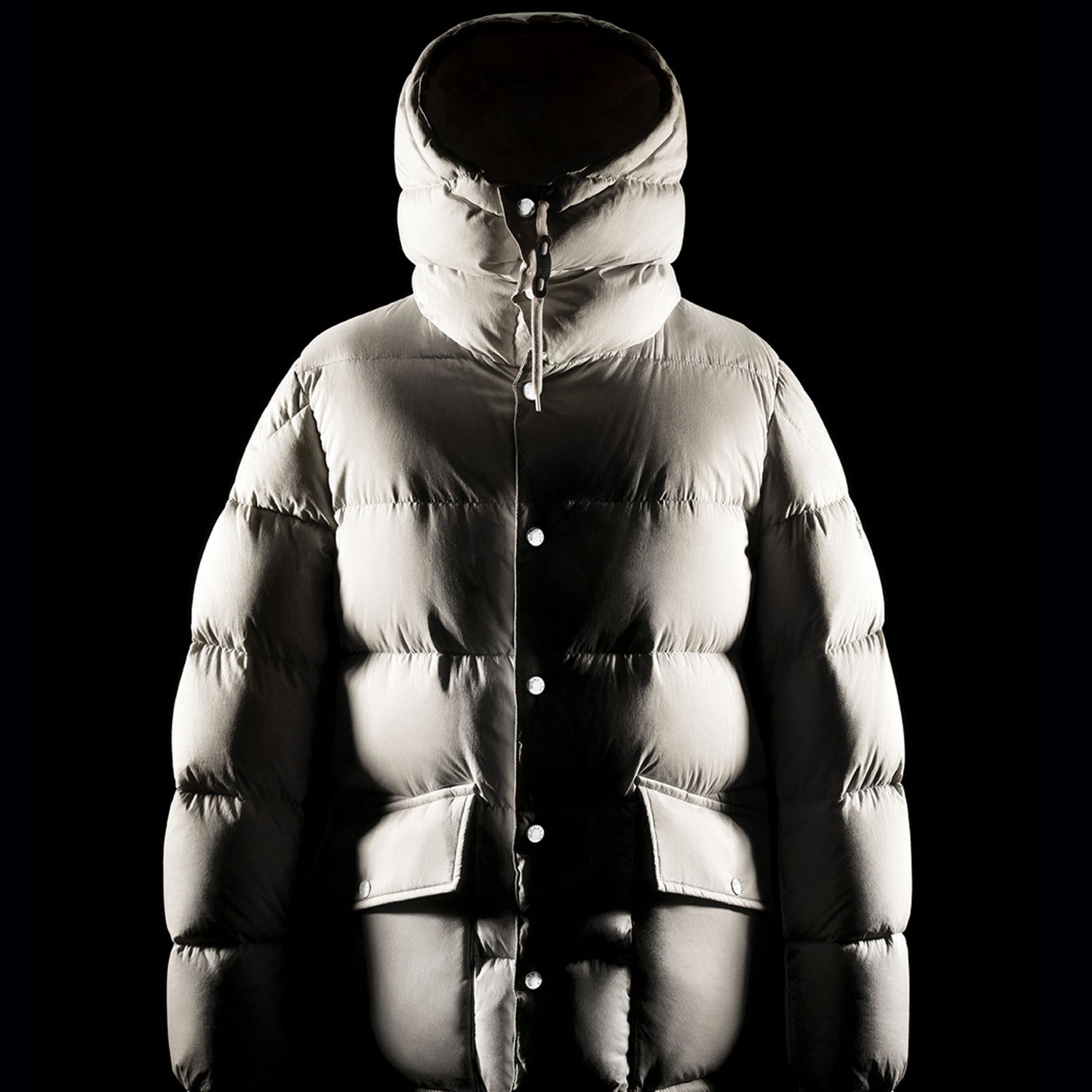Recently, luxury outerwear maker Moncler announced that its spring-summer 2016 line would employ a new technological tool to fight counterfeiting: every garment gets a radio-frequency identification (RFID) chip embedded in it.
Customers who are curious if they’ve got the real thing can scan the chip with an app (the chip will also have a QR code and an alphanumeric code they can check on Moncler’s web site). If the code verifies, it’s authentic Moncler gear.
Counterfeiting is a global scourge that affects almost every consumer product in every category you can think of, from baby formula to bike parts. Fakes aren’t just a ripoff of a company’s intellectual property. The goods themselves are substandard and sometimes dangerous: fake pharmaceuticals with unknown ingredients; imitation ski helmets with thin foam that won’t protect in a crash. And you can buy with the knowledge that your money is going to support organized crime, human trafficking and even terrorism!
My first reaction to the Moncler news was, “Good effort, but ultimately it won’t matter.” The reason counterfeiting persists isn’t because goods are too easy to fake. It’s because we keep buying them.
Physical anti-counterfeiting measures are widely available. In parts of Africa and Asia, where fake pharmaceuticals account for as much as 30 percent of those found at retail, manufacturers are using QR codes and other verification measures that let customers scan a bottle to ensure they’re buying the real thing (fakes kill hundreds of thousands of people a year). In outdoor equipment, some gear makers are using solutions like holograms on packaging or the product itself, which are difficult to fake, for the same purpose. RFID chips, like those used in Moncler’s proudcts, serve much the same role: the difference is in degree, not kind.
But there are two major issues, technical and psychological, that physical measures can never solve.
The technical problem, for the outdoor industry at least, is that these approaches really only work when someone purchases goods in person, where they can verify an item’s authenticity before they slide a chip card into the sale register. And in the U.S., at least, counterfeit goods almost never leak into legitimate sales channels. If you buy a Giro helmet, say, from an authorized dealer, even online, it’s the real thing.
But when you buy online, either from a web site purporting to be a retailer or through an auction or marketplace site, you have almost zero certainty that a product or a seller is legit. Product photos may be of the real thing (or even lifted from the manufacturer’s website), but what arrives may be different than what’s pictured. And by then, they already have your money. Most marketplace sites have processes to get your money back if an item didn’t come as advertised. But they can be time-consuming and difficult to use, and you may have to pay return shipping fees that can eat up a significant part of your original purchase price. (On some retailers, for example, return policies for instances when the item is “not as described” vary and are set by the store merchant, not the retailer.)
It’s no surprise then that a significant amount of brand protection goes to policing those marketplace sites. Armed with intellectual property rights and content-recognition tools that can target everything from slightly altered brand names (say, Monclaer) to images, brands and their representatives, like MarkMonitor, NetNames or Convey, file dozens, even hundreds, of takedown notices every day.
But that’s a Sisyphean task. Andrew Love, head of brand protection at bikemaker Specialized, told me for a story in Bicycling last year that Specialized had “knocked down” more than $15 million in fakes across more than 70 auction sites worldwide. Despite that, the threat keeps growing. And what gives experts like Love pause now is that sales are increasingly migrating to platforms they can’t monitor as easily, namely social channels (hello, Facebook Oakley ad spam). Facebook’s groups, for instance, allow sales between private members. Payments can be routed through Facebook’s own app. It seems fine because it’s Facebook, but in reality anything goes: last month, C.J. Chivers reported in the New York Times on terrorists using Facebook groups to buy and sell heavy weaponry.
Do you sense a theme? Every time brands come up with an effective tool to fight fakes, the counterfeiters find a new channel. The Greatkeenbikes.com domain gets seized by Specialized? Find GK Bike stores on Ali Express and DHGate, two direct-from-Asia marketplace sites that sell to consumers worldwide. Takedown notices getting online stores shuttered? Paypal and Alipay accounts getting frozen? Log in to Facebook, where Jerry GK just sent you a friend request.
All that is a significant technical challenge, but it pales beside the more pernicious one. Counterfeiters persist for one reason: there’s a market, which consists of two broad groups of people. The first is made up of people who know they’re buying a fake and don’t care; they have the shallowest attachment possible to the brand they’re after and the name alone is enough. That’s a core customer of the fakes market and is the reason why, realistically, we’ll never actually be rid of counterfeits.
The second group is different: they’re not inclined toward a fake, but they are aggressively looking for a good deal. Which is to say: most of us. It’s why we look for sales, why we ask if a friend in the industry can get us a deal, and why we say with more than a hint of satisfaction if said deal does emerge, “Friends don’t let friends pay retail.”
The problem, according to researchers who’ve studied the counterfeit phenomenon, is that we’re very good at telling ourselves stories that justify buying what we should realistically know is a fake. Some old chestnuts: the shoes come from the same factory as the legit ones—they’re just cosmetic seconds or produced on “third shift;” the companies that sell this stuff are getting rich because most of the retail price is just sales and marketing—you’re cutting out the middleman by going straight to the factory; and last, the companies that are getting ripped off deserve it for offshoring their manufacturing.
On examination, little of that is true. Third-shift counterfeiting does exist, although to what degree is difficult to find because brands often don’t publicize when they’re ripped off by their own factory partners. More common are imitation goods that are reproduced based on physical samples or even photos. Sales and marketing bloating the price tag?
Yes, the capital cost of goods is often a relatively small part of the final retail price, which includes things like sales, marketing and brand cachet (even we can’t really find a solid justification for a $1,000 down coat). But with respect to technical outdoor gear, that elevated price includes other, very important aspects of manufacturing that matter when you trust your comfort, safety and even life to your gear: research and development to create better products; engineering and product testing; import duties for overseas products; legal and regulatory approval (say, for helmets); and warranty service. And as for the argument that counterfeiting is just desserts for offshoring, here’s the catch: counterfeiting strikes even companies that don’t offshore production. Zipp and Enve, for example, make carbon-fiber bicycle wheels only in the U.S. at their own factories. Both fight significant counterfeiting battles. (In a bit of irony with respect to this particular argument, the “middleman” costs that counterfeit buyers are attempting to cut out are often American jobs.)
If it’s not abundantly clear already, let me spell it out: the only thing that’s going to ever really blunt counterfeiting is when consumers wise up and stop engaging in the magical mental gymnastics we perform to convince ourselves that the $1,000 down jacket, or $4,000 bike frame, we found on a marketplace site for 10 percent of the suggested retail is in fact the genuine article.
Counterfeiting will probably always exist because of the buyer who doesn’t care about fakes. But there is hope for the rest of us. If you ever bought a piece of brand-new outdoor gear for pennies on the dollar and it wasn’t from an authorized retailer, stop thinking that you’re just smarter than the rubes who pay retail. Stop telling yourself that the companies that sell this are just fleecing you to make sure even the janitors drive Audis. If you can’t afford a particular product, stop justifying why that’s the brand’s fault, not yours (or your employer’s). Stop telling yourself that it’s okay. It’s not.


